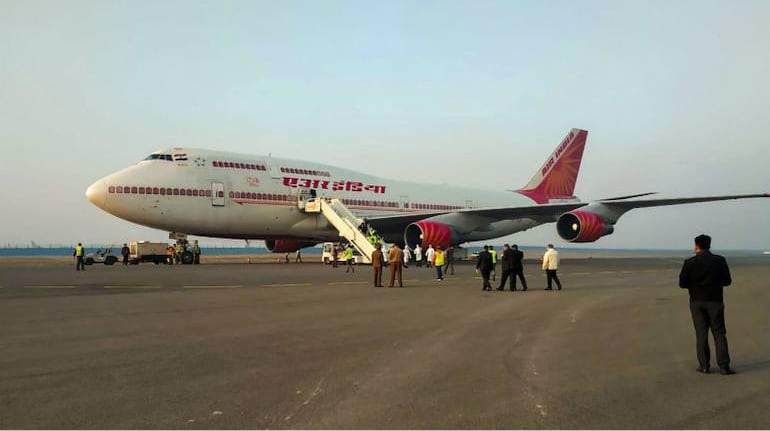



The government had put its best foot forward in January this year, when it restarted the divestment process for its troubled carrier Air India. Unlike the failed attempt in 2018, when it wanted to retain some ownership in the airline, the government was now offering to exit completely from the state-owned carrier.
To attract additional suitors this time, the government had already parked nearly Rs 30,000 crore of debts and liabilities in a special purpose vehicle (SPV). Only about Rs 23,000 crore of debt remained.
"It was the most aggressive approach yet on the disinvestment," says Zulfiquar Memon, Managing Partner at MZM Legal, a legal firm. "If not for COVID-19, the airline may have got a new owner by now."
The pandemic forced scores of airlines around the world to file for bankruptcy, and it may take the industry another year, if not more, to get back to pre-COVID-19 levels. It won't be an exaggeration to say that aviation has been the most impacted industry in the last six months.
Against this context, do the revised terms that were announced on October 30, help sweeten the deal enough for suitors to come forward and put in bids for Air India? For instance, will Tata Sons, which was the only one to make its interest in Air India official, now come forward and submit an expression of interest?
What's new?
The biggest change is on the Rs 23,000 crore debt. A bidder can now decide how much debt he wants to take on. It could even be zero.
Also, the winning suitor will have to deposit 15 percent of the bid amount in cash with the government. This is akin to the performance bond a bidder has to pay after his resolution plan is selected, in the insolvency process of a company under the Insolvency and Bankruptcy Code.
"It's simply now an auction. Intrinsic or asset value, debt are no longer a constraint or barrier. The airline will go to whoever's bid is the best (or least lowest), even if it means a huge write-off for the government," says Sanjiv Kapoor, former head of strategy and commercial operations at Vistara, the Tata-SIA airline joint venture.
The government, which seems to be eager to take its hands off the airline, won't mind that, as it has to otherwise use more of taxpayer's money to keep the carrier flying. By September, the government had already provided Rs 1,000 crore to the airline, which incurred a loss of Rs 2,570 crore in the first quarter of the present financial year. A year ago, its losses stood at Rs 785 crore, in the same quarter.
The losses and the probable negative net worth of the company throw up a challenge for any interested suitor - how will you value the airline?
Strengths and weaknesses
Air India, India's first airline, comes with an extensive network, widespread infrastructure and a brand that still has a strong recall, despite the wearines around it.
The combined airline - including Air India and its unit Air India Express - with a fleet of 146 aircraft, will fly to 57 domestic and 45 international destinations. More importantly, the new owner can dip into Air India's significant slots (domestic slots: 4,486, international slots: 2,738) and code share agreement with 25 airlines.
While these look like strong points, against the COVID-19 backdrop, the sheen wanes.
At present, airlines from India can fly to only 18 countries with whom the government has put in place an air travel bubble arrangement. World over, long haul carriers have started re-thinking their plans, including expanding their wide-body fleet.
As COVID-19 cases resurface in Europe and North America, among the most favourite destinations for India, it is tough to guess when Air India will be able make full use of its slots and flying rights. Till then, these are assets that are just good to look at. That's all.
As Memon puts it, while the government's intent is right, the timing - unfortunately - has turned wrong. "You are with a sick asset in the market at a time when globally the industry is down on its knees," he says.
Few companies, say a senior executive who didn't want to be named, will be willing to take on any kind of debt. "You could start a new airline on a clean sheet of paper for much less, and with no debt or liabilities," he adds.
What more can the government do?
Breaking up the company and selling it in parts, is one of the ways, says Memon.
That would mean to separate the domestic and international operations and sell each. And sell Air India Express, the unit that was bundled with Air India, independently.
Perhaps, "the government could infuse some equity to instill confidence and promise to handhold the new owner, giving it strategic edge," he adds.
Discover the latest Business News, Sensex, and Nifty updates. Obtain Personal Finance insights, tax queries, and expert opinions on Moneycontrol or download the Moneycontrol App to stay updated!
Find the best of Al News in one place, specially curated for you every weekend.
Stay on top of the latest tech trends and biggest startup news.